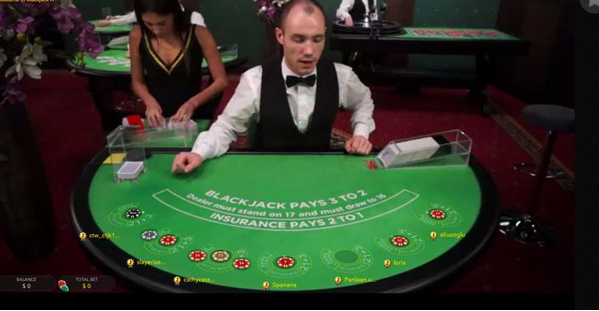You can’t play a hand of poker optimally without taking a number of important factors into account. They each add critical information that helps you make killer reads and perfect exploits. Below, I’ll be listing each of these six factors in order of importance. For that reason, you might be surprised at what I place at #6, at the bottom of the list. Without any further ado…
1. The Player
Your opponent is critical and MUST be factored into your decisions. Your history with them including poker statistics, showdown hands, bet sizes, the things they’ve said at the table and even more, all factor into your winning strategy. When you understand your opponent and know their tendencies, you can make more accurate reads on their hand strength and devise plays to exploit them.
- Before open-raising, you notice that all three players to your left love to 3bet. Do you think this should restrict your open-raising range to better defend against the expected 3bet? For sure.
- Before calling a flop ¾ pot bet, you realize the bettor is flop honest and only bets with top pair+ or the nut draw. You hold a 2nd pair hand with a weak draw. Should you call? No, fold and exit.
- The player just triple-barreled and bet 120% pot on the river. You’ve played 1,000 hands against him and he’s never triple-barreled before, let alone with such a huge size. What should you do with your top pair top kicker? Yep, fold that sucker and be thankful you’re such an observant and disciplined player.
2. The Position
Most of your opponents are at least semi-aware of the value of position. They’re tighter in the early position, they love playing the cutoff and BTN, they don’t like the blinds, and they don’t like it when their early position open-raise gets 3 late position callers. And post-flop, they’re happier to cbet in position and they don’t like playing OOP over multiple streets.
- A tight player raised under the gun, you called in the cutoff with 66 and hit a set on As Tc 6s. He cbet ¾ pot. Do you just call or reraise? Versus this tight player with a strong Ace and Broadway heavy range, you must raise. Get value while the getting’s good.
- He’s 3betting for a 3rd time from the small blind. You hold KQs, how do you respond? 4bet bluff ’em! He uses the SB for 3bet stealing, so fight back in position with your solid AK, AQ, KK and QQ blocking hand.
3. The Action and Bet Size
Strong plays and big sizes (check-raises, 3bets, 120% pot, etc.) are often signs of strength. Calling, checking and smooth calling tiny bets are often signs of weakness. In general, attack weakness and avoid strength. And, when you combine their tendencies with their play and bet size, you can make some killer reads and exploitative plays.
- A fish limped and a tight aggressive player iso-raised to 4BBs. You hold A9s on the BTN. What do you do? Come over the top with a 3bet bluff. Your suited Ace blocker is a great hand for this, and the tight aggressive player is just making a standard isolation play. Attack!
- You open-raised QcJc and the BB fish called. He donk bet 1bb on the Jh 6h 4d flop. What do you do? Attack with a raise. 1bb donk bets are blockers with weak hands and draws, so charge him to see the turn.
- The river is a King, giving you top pair weak kicker (KJ). You had bluffed King-high on the flop and turn, and the tight player called. Now you bet 60% pot for value, and he raises you IP 4.5x. What do you do? Fold. A tight player making a 4.5x river raise is striving for max value… don’t give it to him.
4. The Stack
The number of chips they have and the effective stack size (the amount you’re both playing for) is important. This is critical in tournaments as there are plays like 3bets and re-shoves that can earn tournament life-extending chips. And, it’s also a key aspect in cash games. The smaller the effective stacks, the more selective you have to be in battling. The larger the effective stacks, the more room you have to maneuver both pre- and post-flop.
- You both have 140 big blinds and he just open-raised in the cutoff. He folds to 3bets about 50% of the time. You have ATs on the BTN, and although you’d prefer he folds, your hand plays well post-flop in case he calls. Should you 3bet? Sure, take a stab and with the large effective stacks, you have room to bluff post-flop.
- It’s a cash game. He just opened in the cutoff with a 30bb stack. You’re considering a 3bet with ATs, but he calls 3bets most of the time. Should you 3bet? No. If he calls, the pot is ~20bb’s and he only has ~20BBs behind. He’s probably committed with any pair or draw on the flop, and even overcard draws, so it’s going to be tough to bluff him. Call instead and play the flop in position.
5. The Board
We know that huge preflop favorites can quickly turn into dogs on the wrong flop, the wrong turn or the wrong river. So, with every hand, you must take the prior four factors into account and consider how they interact with the board.
- AsAc looks great on the K83 rainbow flop. So, can you value bet the flop and probably the turn? Yeah, pretty easily because the flop is so dry and not many turn cards will drastically change your equity.
- But, those same Aces, AsAc on the 7h8h9h flop, are potentially in a lot of danger. Should you automatically value bet the flop, and barrel the 6c on the turn? Probably not. Things are very dicey with no redraw on a 3-flush and 4-straight board, even with the best overpair. So, getting to showdown cheaply is a great idea.
6. Your Hand
Yep, your hand is at the bottom of this list. It is important, but the prior five factors help you make profitable decisions that your hand alone can’t. When you started playing poker, your hand was the #1 thing you considered, followed by the board at #2 (factors 5 & 6 on this list). But now that you’re a more seasoned player and studier, you’ve learned the value of the first five factors and now you consider those before your own hand.
- You hold KK and have the chance to 3bet in the cutoff, but you notice there are three aggressive 3bettors are still to act. Does your gut say to 3bet? Or, do you consider calling to try and elicit a 3bet squeeze from one of the remaining LAG’s? Either play works for me, but you’ve only considered this calling option because you’re paying attention to the other key factors, not just your hand.
- You hold JT on the A74r flop. Your very aggressive opponent just checks to you. “Wow, why didn’t he cbet?” You suspect weakness, so should you float to steal? Even though you hold nothing but a J-high hand? Absolutely!
Check out this video for the perfect floating strategy:
Take Action
Put the six key factors on a sticky note, in order, and attach it to your monitor. Over your next three online poker sessions, play just one table for 30 minutes before adding tables. During the 30 minutes, for each hand you’re in or thinking about playing, take these six factors into account and use them to make the best decisions possible.







